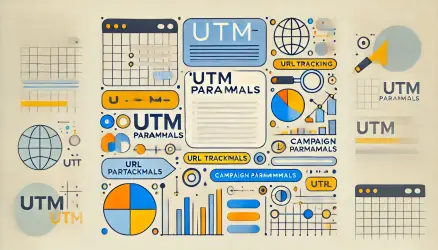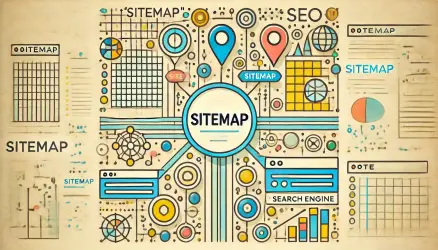The year 2020 made most of us more isolated, whether we were sent to quarantine, found ourselves in government-imposed lockdowns, or were taking care of our parents and grandparents and avoiding meeting them to keep them healthy.
This situation, a product of the COVID-19 pandemic, deepened our reliance on virtual tools; if we had to conduct the Passover Seder via Zoom, and the wildest place we celebrated Independence Day was on a balcony or in a garden, it’s clear that 2020 also pushed the last of the analog holdouts into the digital world.
The lockdowns and restrictions that sent hundreds of thousands of people into unpaid leave or to unemployment offices forced business owners who managed to survive to take several significant steps toward online commerce and service.
People who relied on eye contact, smiles, rhetoric, and face-to-face persuasion techniques they had honed over years found these tools becoming less relevant when it was not possible to physically enter a store, or when those who did enter could only do so in limited numbers and after filling out a health declaration and having their temperature checked.
All these were replaced by well-designed landing pages and investments in social media, but not least by a tool that has gained breathtaking momentum globally since the start of the year: chatbots.
Chatbots
The principle of conversation between man and machine, or conversational AI, has been with us since the days of Alan Turing, the man responsible for cracking the Nazis’ code during World War II, who a decade later asked “Can machines think?”, and from Eliza, the revolutionary invention by Jewish-American scientist Joseph Weizenbaum, which in 1966 simulated psychotherapy through a conversation with a computer.
Since the 1980s, scientists and programmers have been attempting to pass the Turing test and deceive the examiner into thinking that the software they wrote is a human being. However, during that time, the field was primarily reserved for experts and machine learning researchers.
The Big Players Enter the Arena
The conversation between man and machine made a tremendous leap toward the mainstream thanks to two processes that occurred in the middle of the last decade: the entry of voice assistants into smartphones, such as Siri and Alexa, and Facebook’s announcement at the F8 conference about launching chatbots for Messenger. However, even though “chatbot” has become the buzzword of the moment, it’s important to know that not all machines that talk to humans were created equal.
Siri and Alexa, for example, are fundamentally not chatbots but “voice assistants.” If you want to know the weather in Haifa or request a Beyoncé playlist, they will happily assist you. If you want to have a chat, they usually get stuck after a sentence or two, leaving you with a nice punchline and a dead end.
Other bots will start a conversation politely but will quickly direct you to a flowchart: we can help you with option 1, 2, 3, or 4, and from there, a tree of branches continues. Clicking “Yes” will lead to one answer, clicking “No” to another. Usually, these conversations feel technical, more like an automated phone system at a licensing office, not like talking to a person.
Chatbots, textual or vocal, have their own rules: they aim to give you the feeling that someone who understands you is on the other side. A friend and partner. In the evolution of conversational AI, the chatbot is currently the most sophisticated stage. And when there’s demand, a new profession has also emerged in recent years: Conversation Designer or “experience conversation designer.”
This profession is particularly fascinating because it has drawn people from various disciplines, who had little in common before: bankers and comedians, UX designers and journalists, linguists and project managers, teachers and programmers, screenwriters, and social media managers. Each brought their perspective, methods, and experience, and the industry began to advance.
The Mini-Bots Method
However, progress is a relative matter. Four years into the chatbot revolution, one might have expected thousands of bot manufacturers around the world to have consolidated common standards, and to ensure some basic quality threshold for the client and end-user. In practice, today each studio and such company writes the code for their bot from scratch, causing many bots to come out of the factory in a way that would make Turing tweet a Facepalm emoji from his grave.
Sitting back, lecturing, and publishing screenshots of failed bots is nice, and it’s also fun to laugh at companies that charge hundreds of dollars a month for bot operation and provide mediocre, generic user experiences. For us at CoCoHub—some of us in the field between 5 years and over 20 years, decorated with awards and achievements—this frustration has been channeled into a positive place of action.
At the end of 2019, the first commercial arena of its kind for Conversational Components went live—each one, a small bot that performs a specific function. The tool allows people with very basic technical knowledge, even those who do not know code, to build their own bot and integrate it into their site, for example, through a dedicated WordPress plugin.
This shared code platform with dozens of components can serve as the same quality base for the entire industry and expand the circle of users of this important tool.
How Does It Work?
Imagine you want to make Shakshuka and go to the market: at one stall you buy eggs, at another tomatoes, at a spice stall the paprika, and at the bakery the challah with which you’ll mop up the remaining sauce.
Now, instead of Shakshuka, imagine a bot for an online store: you need one conversation component that asks the user for their name, a second one that asks for their email address, a third that gives them a discount coupon or conducts a survey, and a fourth that engages them in small talk about pets, video games, their favorite food, or Michael Jordan.
All these can be found in the new commercial arena, and by connecting to the system it’s possible to set up the bot, and even add personal touches to tailor it to your brand values and unique language.
Reports from AdWeek and Salesforce showed that about two-thirds of consumers prefer to talk to a virtual service representative to find answers to simple questions rather than wait for a human representative, and are even able to complete a process on the website without a human representative at all. A Gartner report showed that businesses save human representatives 70% of correspondence and responses by using chatbots.
The goal is not to eliminate the service center industry but quite the opposite: to allow service representatives to handle truly complex cases, and to prevent people from waiting in line for 5 minutes for an answer they can find in 5 seconds. MIT has already found that businesses reported a 90% improvement in complaint handling efficiency following the use of the tool.
And since every business is thinking about how to reach the significant purchasing power of millennials, take note of the following data from Forbes: 60 percent of them have talked with chatbots, and 70 percent described the experience as positive.
In Conclusion
From every possible angle, this is an industry that is only growing and flourishing, and those who adopt it, crack it, and find a way to communicate with their customers, especially with the younger generation who aspire to talk to businesses as if they were people, will create a significant advantage for themselves.


